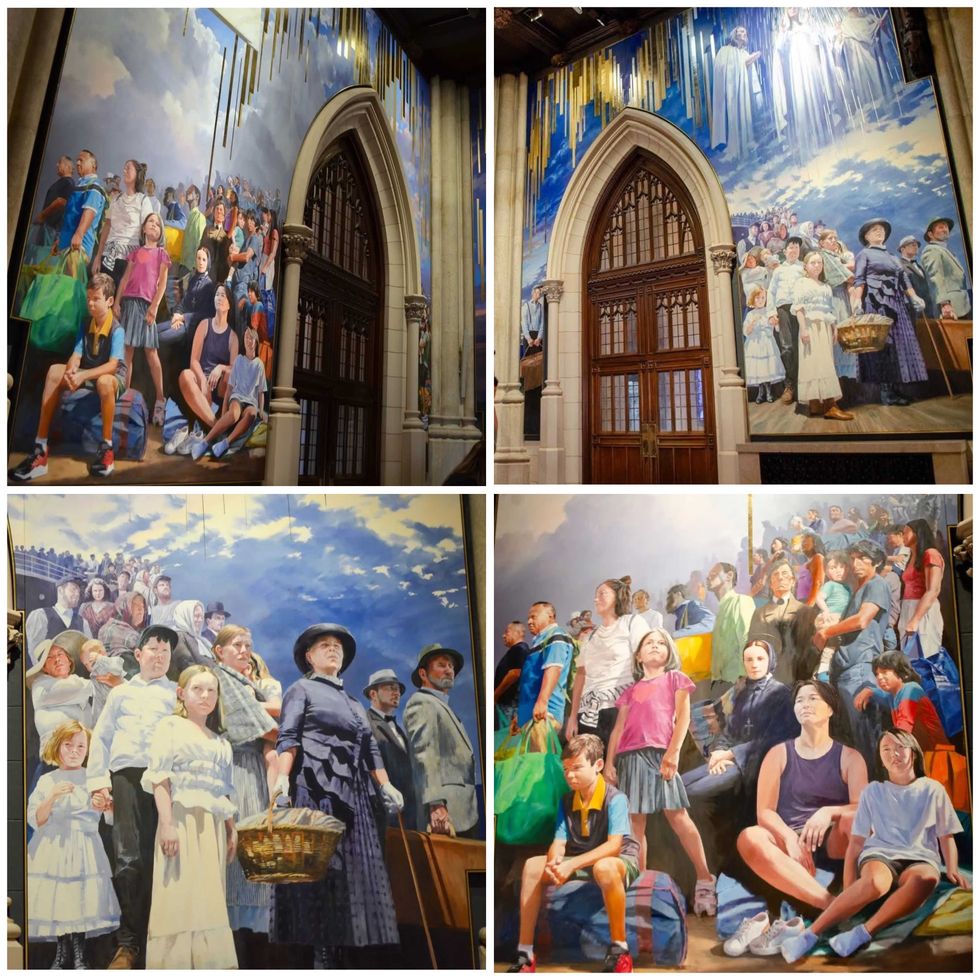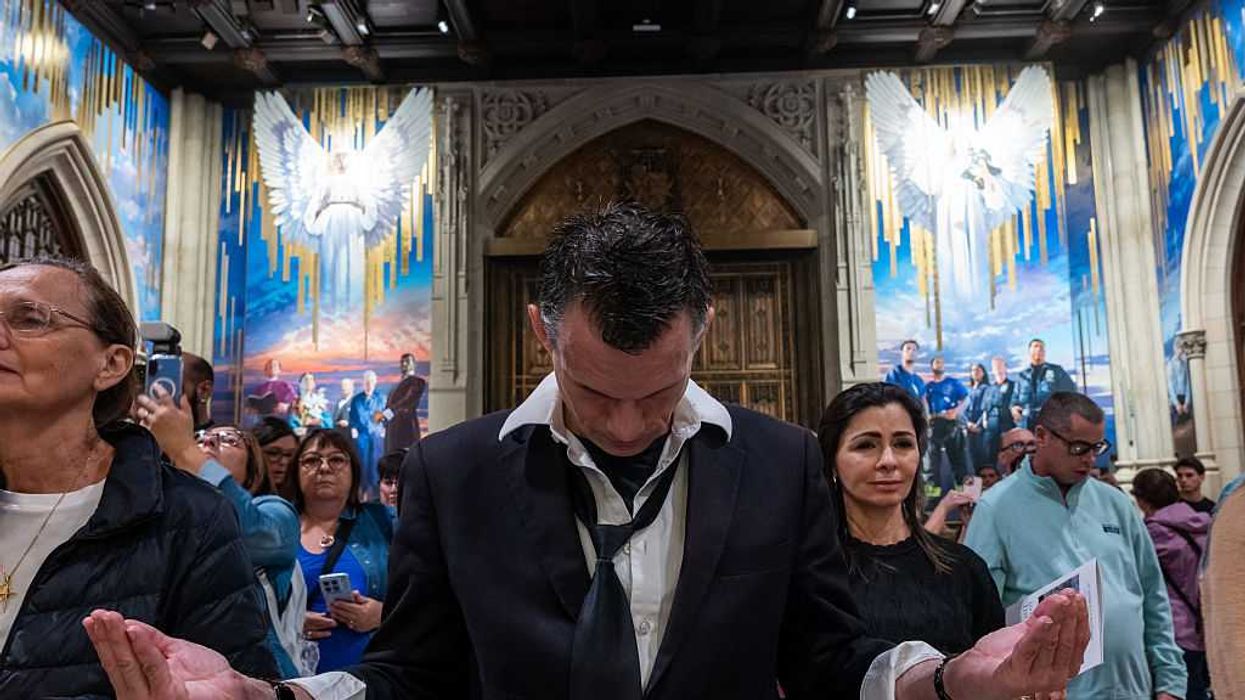In a bold fusion of sacred tradition and contemporary relevance, artist Adam Cvijanovic has unveiled a sweeping new mural at St. Patrick’s Cathedral in New York City—one that reimagines the historic narthex as a vibrant ode to peace, migration, and spiritual continuity.
In an age of polarization and performative politics, it’s rare to find a work of art that speaks with both spiritual clarity and civic urgency. Yet that’s exactly what “What’s So Funny About Peace, Love and Understanding” accomplishes. The piece is more than a visual upgrade to a “dreary” entranceway—it’s a theological and cultural intervention, one that invites every visitor to confront the moral stakes of our immigration discourse.
 “What’s So Funny About Peace, Love and Understanding” by Adam Cvijanovic thefulcrum.us
“What’s So Funny About Peace, Love and Understanding” by Adam Cvijanovic thefulcrum.us
Commissioned by Cardinal Timothy Dolan, the mural marks the first major artistic addition to the cathedral in 75 years. It began as a depiction of the 1879 Apparition at Knock, Ireland. Still, it evolved into something far more expansive: a sweeping narrative that links biblical refugees, American saints, and modern-day migrants in a single, luminous arc. The result is a mural that doesn’t just decorate—it interrogates.
“Literally, Jesus, Mary, and Joseph were refugees as they had to flee to Egypt,” Dolan told CBS News. “So, what would you think of an ode to the immigrants?”
That question—posed rhetorically by one of the most visible Catholic leaders in the country—lands with force. In a time when migrants are vilified, asylum seekers are politicized, and border policies are weaponized, Cvijanovic’s mural dares to remind us that the sacred and the displaced have always been intertwined. The Lamb of God, Mary, Joseph, and John are rendered not as distant icons, but as part of a continuum that includes Ellis Island arrivals, contemporary refugees, and even the homeless.
“There’s been a permission to be cruel,” Cvijanovic said. “This is not about saying, ‘Well, there should be open borders.’ The Church isn’t saying anything like that. The Church is just saying, ‘People are people. Treat them with respect.’”
The mural’s most striking panels depict present-day immigrants waiting to be welcomed—an artistic choice that has sparked conversation about faith and politics. Dolan, who has both participated in presidential inaugurations and criticized harsh immigration policies, acknowledged the mural’s potential to stir debate.
“People have said, ‘They’re gonna look at this as a political statement.’ And I said, ‘Well, it kind of wasn’t intended to be a political statement, but if that’s the way they interpret it, fine with me,’” he said.
That ambivalence is telling. In a country where compassion is often mistaken for partisanship, even a mural can become a battleground. But Dolan’s willingness to embrace that tension is commendable. He’s not asking for consensus—he’s asking for conscience.
What makes the mural so powerful? It doesn’t preach policy; it preaches presence. It doesn’t offer solutions; it offers solidarity. And in doing so, it reclaims the role of sacred art as a mirror to our moral condition. Cvijanovic’s mural is a masterclass in narrative layering. It’s not just a painting—it’s a platform. It invites viewers to see immigration not as a crisis, but as a crucible of faith, resilience, and shared humanity. It challenges us to move beyond headlines and into heartlines.
Cvijanovic’s work reminds us that art can do what politics often cannot—it can humanize. It can hold complexity without collapsing into slogans. It can speak to the soul while nudging the conscience. And in a time when cruelty is codified and empathy is endangered, that’s no small feat.
St. Patrick’s Cathedral, which completed a $177 million restoration in 2015, welcomes over five million visitors annually.
Hugo Balta is the executive editor of the Fulcrum and the publisher of the Latino News Network. Balta is the only person to serve twice as president of the National Association of Hispanic Journalists (NAHJ).


















